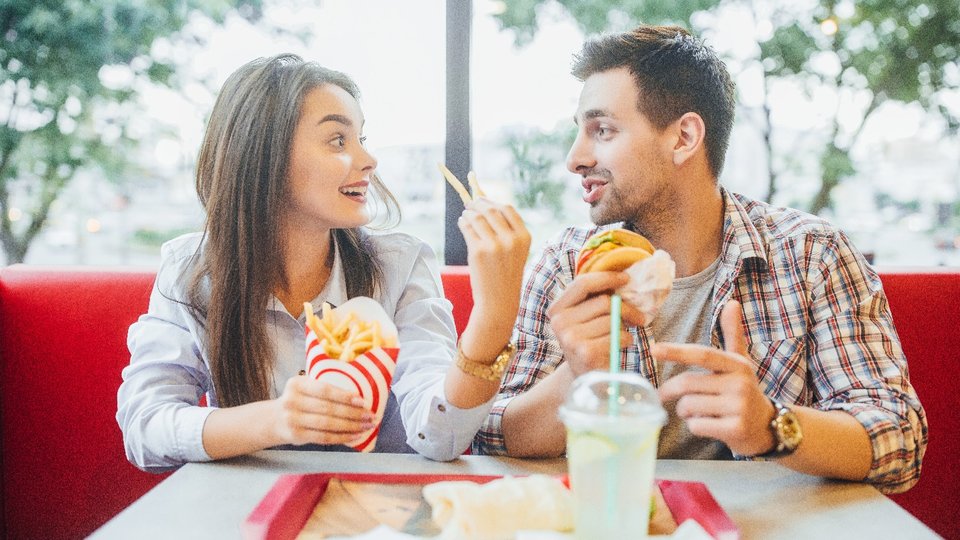Operations
Inflation exposes gaps in restaurant loyalty, physical experience
Hope Neiman, CMO for Tillster, explains how restaurants can create more meaningful interactions with the guest and leverage technology for a best-in-class guest experience.

July 10, 2023 by Mandy Wolf Detwiler — Editor, Networld Media Group
Diners are eating out less as the economy struggles. With grocery and gas prices on the rise, luxuries like dining out, especially at full-service restaurants, take a back seat to necessities. But QSRs and fast casuals are faring better with lower-priced menu items and expanding menus.
QSRweb spoke to Hope Neiman, chief marketing officer for Tillster, a kiosk company that grew into a best-in-class, metric rich engagement and ordering solutions provider for multi-unit restaurant brands, to learn how QSRs can create more meaningful restaurant experiences for those customers who still want to dine out.
Q. As diners cut back on dining out to navigate inflation, how do you recommend QSRs create more meaningful physical restaurant experiences?
A. This may sound obvious, but make your guests feel the experience is worth it. Greet them and have a seamless experience even before they walk through the door of your restaurant. In times of economic uncertainty, we often see consumers downgrading their eating experience and turning to QSR and fast-casual options rather than traditional sit down – this is what we saw during the pandemic. However, today's economic uncertainty does not have consumers trading down — they're actually cutting back on takeout and dining out altogether. That's why physical restaurant experiences are so important right now. As a result, QSRs need to consider new ways to add value for the customer. For example, by using technology like 'bring to the table' systems to maximize each guest's experience. Digital prompts such as 'Would you like us to bring you more iced tea?' or 'How does dessert sound? We will offer you 10% off your meal if you choose to order something sweet.' Personalized touch points that meet customers where they are and when they need them make guests feel they are being tended to and are receiving special deals by dining in the restaurant.
 |
Hope Neiman is the chief marketing officer of Tillster, a leading global player in the burgeoning restaurant technology space. Neiman and her team drive outcomes by combining data and technology to expand sales and increase consumer engagement in a measurable way. Photo provided. |
Q. What tools and technology should QSR restaurants be leveraging to help create these more meaningful experiences?
A. Meaningful experiences depend more on ensuring tools and technology talk to one another than a singular silver bullet tool. The restaurant industry is rich with data that can illustrate dining habits, preferences and more. Oftentimes this data is spread across databases (e.g. kiosk data is separate from POS data is separate from third-party data), leading to ineffective use and an ununified view of customers. Every digital platform your brand uses should know the guest and link their favorite items, loyalty program, etc. A CDP (customer data platform) that ingests your data cohesively is one tool that can help unify data. For example, when all of this data is analyzed cohesively, it better equips restaurants to send effective messages and offers that are meaningful and unique to that guest, such as 10% off their most ordered item or a free dessert on their next visit if the guest usually comes in for dinner. If guests know you did something just for them, they will be less willing to go elsewhere. Acknowledge your best customers, as replacing their revenue would be a hit to the business's bottom line.
Q. Is there such a thing as too much tech? If so, why is it so important to create a balance between a physical and digital restaurant experience?
A. Technology plays a critical role in today's restaurants. As more restaurant tech hits the market, it's critical to prioritize a cohesive toolset rather than adopting more of the latest tech. It's no secret the restaurant industry continues to feel the effects of the labor shortage, so for operators and restaurants looking to find a balance they should consider where technology can augment operations and fill gaps in customer service. Tech helps put hospitality back into the hospitality industry, enabling employees to focus more on creating exceptional customer experiences than tedious or redundant tasks. When your employees can devote more to the overall experience, your guests will feel better connected and will want to keep coming back for more.
Q. Beyond opportunities to enhance the physical experience, what opportunities exist as it relates to loyalty for QSRs?
A. These days we see many loyalty programs losing sight of the customer. It's not so much spraying guests with offers and praying they use it. It's much more important for QSRs to ensure the rewards they offer are achievable and can be collected and used no matter what platform a guest orders from. Give guests choices. After all, guests don't all buy the same item on the menu, so why offer everyone at a certain reward level the same thing? On this note, we often find that rewards for food are better received than monetary discounts. Not only is this better for an operator's bottom line, but for the guest money is not memorable while an item is and can be conveyed. When the guest is getting a free item, encouraging paid add-ons is easy, and the guest is more likely to take them.
Q. You mentioned discounts aren't enough to keep customers engaged anymore. In your experience, what motivates diners to come back time and time again?
A. Both your guests and staff are busy, so prioritizing convenience features can help remove friction in the customer experience at all stages. Make your guests feel taken care of, like their business matters and your business is taking them into account and ensuring their next experience is next level. By making it simple for the customer to order and pick-up, it unlocks the mindset of 'I know this restaurant offers a seamless and quick experience every time. I'd rather go there and be treated well rather than go somewhere else where I don't know how I will be treated.' Shifting mentality solidifies customer loyalty, keeping them coming back.
Q. What tools or data should brands be looking to utilize for enhanced loyalty and customer experience strategies?
A. A CDP is paramount. When you have all of your customer data from all channels in one central location, the value of guest data soars. It gives you the ability to segment your audience so you can look at a customer group who may be able to increase frequency or incentivize another groups to spend a bit more based on their habits. As an extension of what I mentioned earlier, it's still critical to be sure all your systems can talk to each other. Email, push notifications, offers and ordering are far more effective if you take one action (like an offer for example) to trigger messaging that alerts the guest of availability or a 'short fuse' to take advantage of something. It is just as important to retain and reward your very best guests as it is to keep others coming back more often.
Q. How can QSRs best leverage customer data to provide better dining experiences and foster long-term loyalty? Are there any challenges standing in the way of this?
A. Connecting the dots can be intimidating to many brands. That's why it's so important to start slowly, expand on successes and prioritize tools that talk to each other and are intuitive to use. Many brands are already short-handed, so finding ways for staff to do fewer actions that achieve multiple things is helpful. Just as it's important to remove friction points in the guest experience, it's also important to remove the operational friction points for employees. Lastly, many operators are intimidated by the notion that they need to understand all the data. It's more important to prioritize the most pressing and actionable data to maximize success.
Q. Looking ahead, how can QSRs ensure these physical experience and customer loyalty strategy enhancements are built to last?
A. My favorite measurement tools are around tracking engagement. Ask yourself, 'Are you lowering the percentage of 'one and done' customers?' and 'Is your group of 'champions' increasing as a percent of your audience?' If not, look at your messaging and offers and consider whether the take rate is strong, or if people are not reacting. Then, keep testing new and exciting opportunities to keep your guests engaged. Don't be afraid to take inspiration from other brands. Guests are used to sites like Netflix, Amazon and Uber, as well as traditional retail. Are they doing things to optimize customer satisfaction that you should be trying too?
Q. Anything else we should know?
A. Have fun with these programs. At the end of the day, your main goal is to make your guests smile. Sometimes simply showcasing these elements in the store and digitally will show through. The more you nurture customer relationships and experiences, the more successful you can be.
About Mandy Wolf Detwiler
Mandy Wolf Detwiler is the managing editor at Networld Media Group and the site editor for PizzaMarketplace.com and QSRweb.com. She has more than 20 years’ experience covering food, people and places.
An award-winning print journalist, Mandy brings more than 20 years’ experience to Networld Media Group. She has spent nearly two decades covering the pizza industry, from independent pizzerias to multi-unit chains and every size business in between. Mandy has been featured on the Food Network and has won numerous awards for her coverage of the restaurant industry. She has an insatiable appetite for learning, and can tell you where to find the best slices in the country after spending 15 years traveling and eating pizza for a living.




